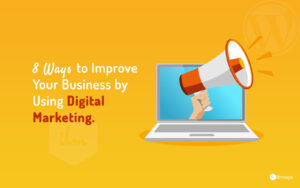We have written how-to guides, shared different templates, and have created many lists to cover important topics in social media marketing. However, we know that for people in charge of social media management, especially in small businesses, don’t always have much time to browse through an extensive blog archive. To give you a hand, and social media marketing tips that will help you improve promoting your business on social media. Following 10 social media marketing tips for anyone using social media for business
1. Your social media strategy must include social media engagement
Social media engagement in your social media strategy can pose a huge threat to your company’s social media presence. But so many of us skimp out on this major business opportunity. To really succeed at social media engagement, you need to take your strategy a step further by being proactive, listening, and engaging. Imagine you own a moving company. The right social media monitoring strategy will allow you to see anyone in your neighbourhood who Tweets about an upcoming move, so you can offer your services to these prospects. At the same time, it will allow you to identify someone who complains about your service without mentioning your Twitter handle, so you can reach out and rectify the issue before the negative comments spread any further.
2. Increase your website traffic with social media
Using social media to drive traffic to your website ranges from the basic tactics everyone should be using, to more sophisticated methods that take a little more time to master. Every action you take on social networks should be a part of a larger social media marketing strategy. That means every post, reply, like, and comment should all be guided by a plan that’s driving toward business goals. It might sound complicated, but if you take the time to create a comprehensive social media strategy, the rest of your social efforts should follow naturally. Everyone can do this if they approach it correctly. You should also use the SMART framework when setting your goals. This means that each objective should be specific, measurable, attainable, relevant, and time-bound.
3. Social media monitoring is your biggest missed opportunity
Social media has provided people the ability to voice their opinion on companies, brands, and people—in short, anything and anyone. What people say can be good or bad, but that alone doesn’t determine your social media success. The way your company listens and engages with these social media posts is what dictates how those opinions influence your online presence and brand sentiment. Manage and monitor all your favourite blogs and websites with Hootsuite Syndicator Pro. This tool provides a quick and easy way to view RSS feeds and share them to your social media channels, as well as rich filtering, monitoring and tracking tools, and most important, the ability to track which stories you’ve shared.
4. All Businesses Should Be On LinkedIn
This social networks provides you with credibility, a large network of professionals, sales opportunities, and a marketing platform for your business. If your LinkedIn business presence is currently a personal page—especially one with a bare-bones resume that’s hopelessly out of date—it’s time to up your LinkedIn marketing game. You need a company presence on the network to gain access to the full range of benefits LinkedIn can offer to all business departments, from recruiting to sales. That’s the real power of LinkedIn for business: the ability to tap into existing connections and grow your brand through word-of-mouth. Rather than simply racking up followers and connections, think about how you can work those relationships to uncover new opportunities to grow your business. Your Company Page can also help increase brand awareness by boosting your company’s presence in search engine results. Use tools like Google AdWords and SEMrush to uncover the keywords that are important to your business, then incorporate them into your Company Page to help searchers discover your business online.
5. Avoid social media strategy mistakes at all cost
We often write about things you should include in your social media strategy: tips, tricks, hacks, trends, and other topics that anyone working in social media should know. But what about the things you shouldn’t do? Many common tactics are ineffective at best, and can be damaging to your brand at their worst. We’re going to touch on those things—the darker side of social media strategy. When it comes to social media blunders, there’s certainly no shortage of examples. Here are some of the more common ones. Along the same vein as posting too much is using your social networks only to advertise your products and services. It’s a practice that can quickly dull engagement and customer trust. Having a big sale? Launching a new product? Go ahead and mention it. But avoid reminding your followers over and over again. Trust us, they know. More than promoting, social is a channel for engagement.
6. Tell all social media sceptics that social media is beneficial to their business
There was a time when social media was considered by some as a passing fad. Something that “the kids” were using that businesses could never really benefit from. Over time, the sceptics were proved wrong. When you have a presence on social media, you make it easier for your customers to find and connect with you. And by connecting with your customers on social, you’re more likely to increase customer retention and brand loyalty. Geo-targeting is an effective way to send your message out to a specific audience based on their location. Social networks like Facebook and Twitter have tools that allow you to communicate the right kind of content to your audience. For example, in Hootsuite you can target Twitter messages to followers in specific countries, or send messages from Facebook and LinkedIn company pages to specific groups based on geographical and demographic parameters. You can also use Hootsuite geotargeting to find conversations relevant to your brand.
7. Target your audience better with the use of social media statistics
Social media statistics allow marketers who use social media for business to guide their social media strategies. With so many studies being done on social media, it would be a shame not to take advantage of these very informative numbers. Whether you’re creating a social media marketing strategy, designing a campaign, or making a business case for using a particular platform, you need to start in the same place: research. The basis of any successful social activity is understanding the platforms, who uses them, and how. That’s why we’ve compiled this list of social media statistics to show what sets each platform—and its users—apart. Whatever idea you’re cooking up, we’ve got the stats to help you plan. The statistics in this post are organized by network and sorted into two categories: users and usage; and businesses, brands, and marketing.
8. content management tools to manage and share your content
Social media content calendar in place, content management can be tricky—especially if you’re juggling several social channels. Picking out the right piece of content to share out to your social media audience can be a daunting task for any social media manager. Most of us are familiar with the phenomenon of the so-called ‘Internet rabbit hole,’ when you start by looking something up, and end up spending hours clicking links. You can spend hours browsing different websites for interesting content to share with your social media followers; but if you’re a social media manager on the clock, you don’t have that much time for surfing the web. For Example:
9. Use URL shorteners to track and measure engagements on your URLs
Tracking retweets and likes is no longer enough to give you sufficient data about engagement. Remember that link you included in your post to drive people back to your website? Well, when you use URL shorteners, you’re provided with a trackable URL, so you can measure the success of that social media post in driving traffic to your website. We often forget the unsung hero of our social media posts, the URL. We put so much effort into creating great content, with nary a thought to this little string of characters. But it can be crucial to its success when you use the right URL shortener. In this post we’re going to talk about what are URL shorteners, why you should use them, and answer some frequently asked questions about shortened URLs.
10. Increase your social media reach with social media advertising
Social media advertising to expand your social media reach is an opportunity that any business should take. Investing in social media ads should be an integral part of your social media strategy. However, knowing how to use social media ads effectively is something everyone should take the time to learn before investing a hefty budget into advertising. Social media advertising strategy that works for your unique business. In this beginner’s social media advertising guide, we dig into everything you need to know about launching a social ad campaign, then give you the nitty-gritty details on how (and why) to create ads on six of the most popular social networks. Before you start developing your social media advertising strategy, it’s important to understand exactly what social media ads are. Quite simply, a social media ad is any kind of paid content on a social media network. The options run from a one-off promoted Tweet or Facebook post to a full-scale campaign with major budgets attached. Each social network offers different options, and we’ll explore them.
Social media marketing is a great form of passive marketing; social media advertising can be a great form of active marketing. It’s worth noting that social media marketing takes a time to deliver the results – you may want to pursue your early social media marketing strategies prior to quitting a job (if that’s an option for you) as it’s a difficult medium from which to get instant results.
Social media advertising will help you get faster results, but it can be expensive.
“Social media is changing the way we communicate and the way we are perceived, both positively and negatively. Every time you post a photo, or update your status, you are contributing to your own digital footprint and personal brand.” – Amy Jo Martin




